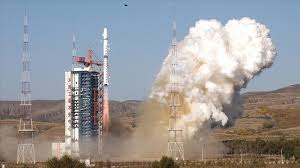China launches remote-sensing satellites into orbit

China launched a Long March 2C carrier rocket on Wednesday morning to place a group of remote-sensing satellites into orbit, according to the China Aerospace Science and Technology Corp.
The State-owned space contractor said in a news release that the rocket blasted off at 9:09 am at the Xichang Satellite Launch Center in southwestern China’s Sichuan province and transported the Yaogan 43C satellites into their preset orbit.
The Yaogan 43C satellites were built by three organizations — the China Academy of Space Technology and the Shanghai Academy of Spaceflight Technology, both of which are subsidiaries of the China Aerospace Science and Technology Corp, as well as the Second Academy of China Aerospace Science and Industry Corp.
They are the third group in the Yaogan 43 series to be deployed and also the newest in China’s fleet of remote-sensing satellites, which refer to spacecraft tasked with detecting and monitoring the physical characteristics of objects on land or at sea by measuring its reflected and emitted radiation.
The Yaogan 43A satellites were deployed in August while the Yaogan 43B satellites were launched in September.
Data obtained by the Yaogan family, the major series of remote-sensing spacecraft in China, has been widely used in governments, public service sectors and businesses.
A product of the China Academy of Launch Vehicle Technology in Beijing, the Long March 2C rocket type is 43 meters long and 3.35 meters wide and has a liftoff weight of 242.5 metric tons. The rocket is mainly used to deploy satellites to low-Earth and sun-synchronous orbits.
The launch mission on Wednesday marked China’s 51st space launch this year and the 542nd flight of the Long March rocket family, the nation’s main launch vehicle fleet.





